Let's get to know El Salvador a little better with the help of traveller Dale of the Maritime Explorer as he takes on our Central America tour.
Well, here we are in El Salvador, one of the last countries I ever expected to visit, but this is Victor Romagnoli’s Central American odyssey on behalf of Adventures Abroad and you can’t visit every country in the region without including this tiny nation. Actually, in my last post I described how El Salvador surprised me with the urbanity of its capital San Salvador and how quickly any sense of unease was dissipated by just walking around a bit. Today we are going to sample a little of what El Salvador has to offer starting with a visit to a volcano, our first Mayan ruin (finally!) and then a return to hippiedom with some tie-dyeing at an indigo farm. Remember, Adventures Abroad specializes in trips for over 50’s and you’d have to be that old to remember the tie-dyeing craze, but even if you aren’t, join us for this fun day in one of the world’s least visited countries.
El Boqueron
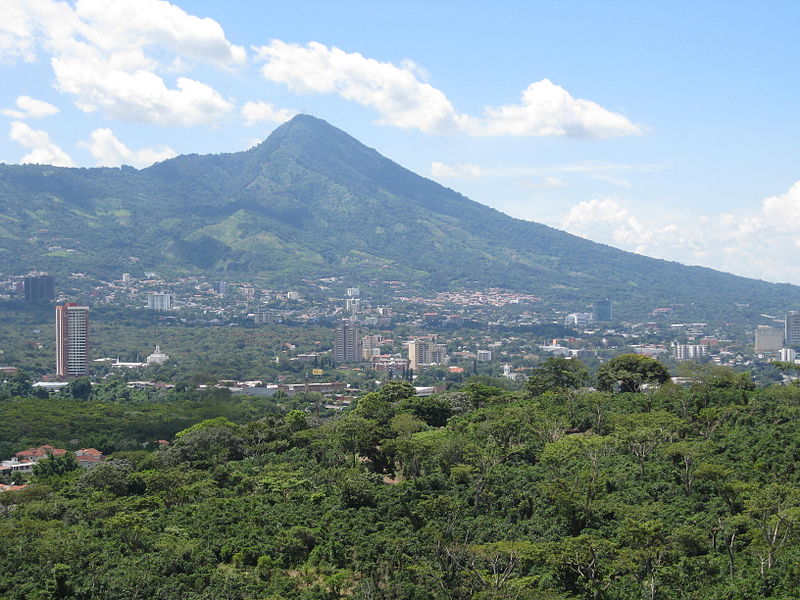
Visible from almost everywhere in San Salvador is a huge mountain to the northwest that bears the same name as the city. San Salvador is what is known as a stratovolcano which means that it it was built up by a series of eruptions, often over many millennia. They are especially bad news when they go postal as evidenced by some of the most famous ones – Krakatoa, Vesuvius and Mount St. Helens to name a few. This volcano has two craters, one of which is El Boquerón, or in english, ‘big mouth’ and that’s our first destination today.
In my last post I noted that our bus was considerably smaller than the one we had in Nicaragua and the reason becomes apparent on our way up to El Boquerón. The road is extremely narrow with a number of hair pin turns that even this smaller bus navigates with difficulty. It’a very pleasant drive through a tropical forest passing local transportation along the way like this one. No need to worry if the air conditioning is working or not.
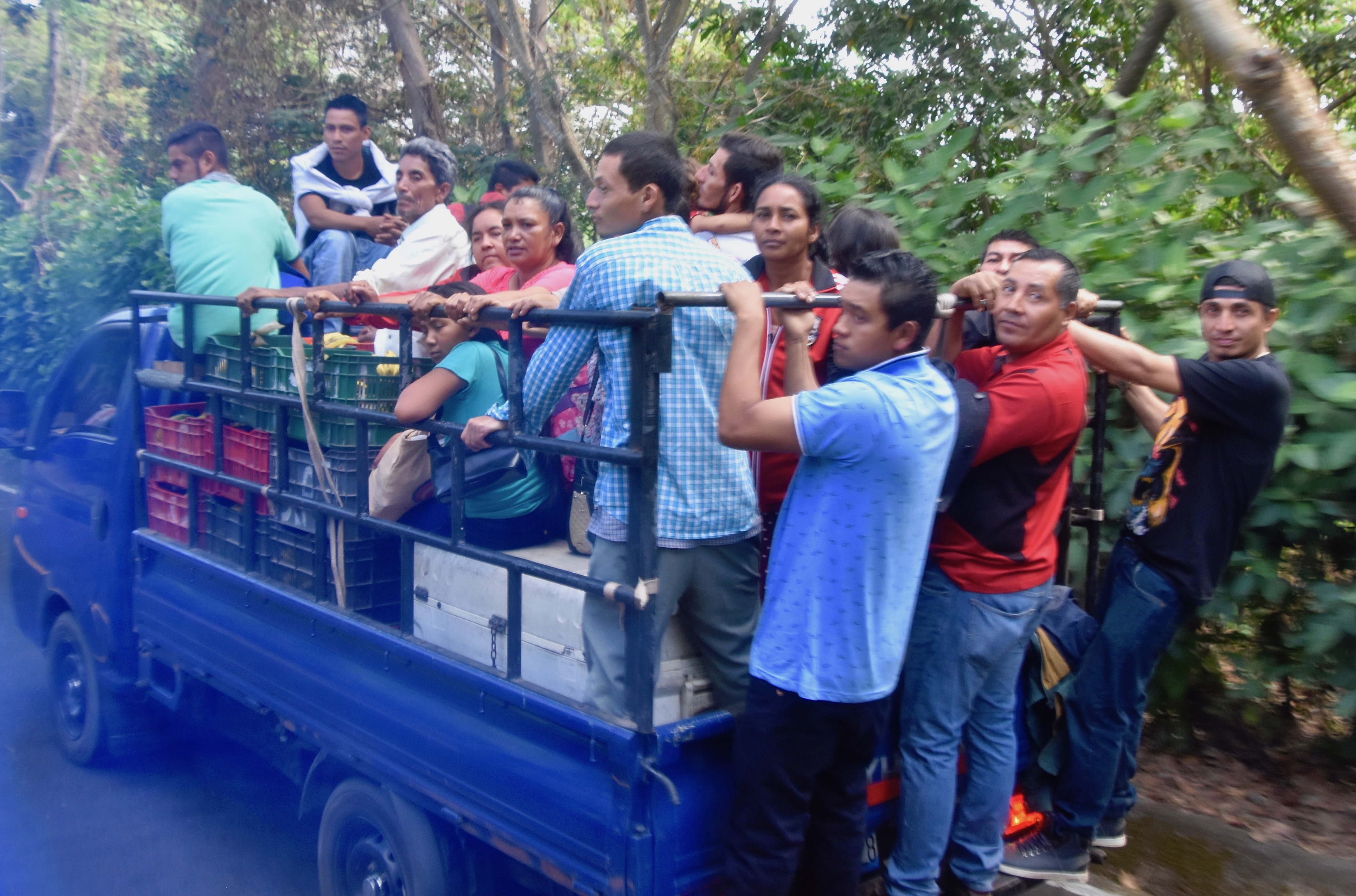
After a long climb up a dead end road we get to the parking lot where there a just a few other cars. Our local guide Dio buys our entry fees, USD $1.00 per person and we set out on the path to the rim of the crater which is the big attraction although I’ll never downplay the pleasure of a walk through a tropical forest anytime, anywhere.
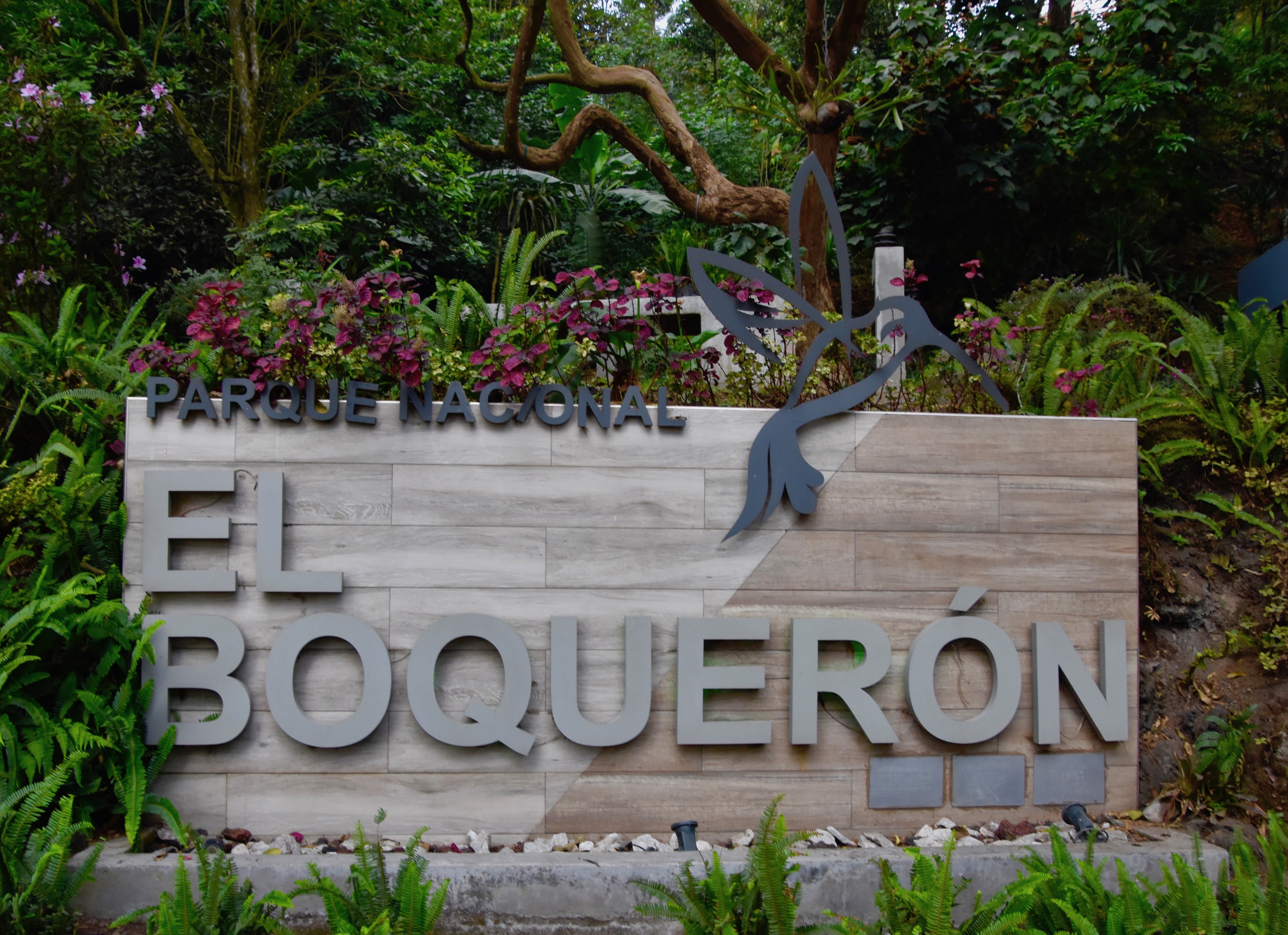
It’s a fairly steep path and by the time we reach the top I’m pretty winded, but it’s definitely worth the short hike.
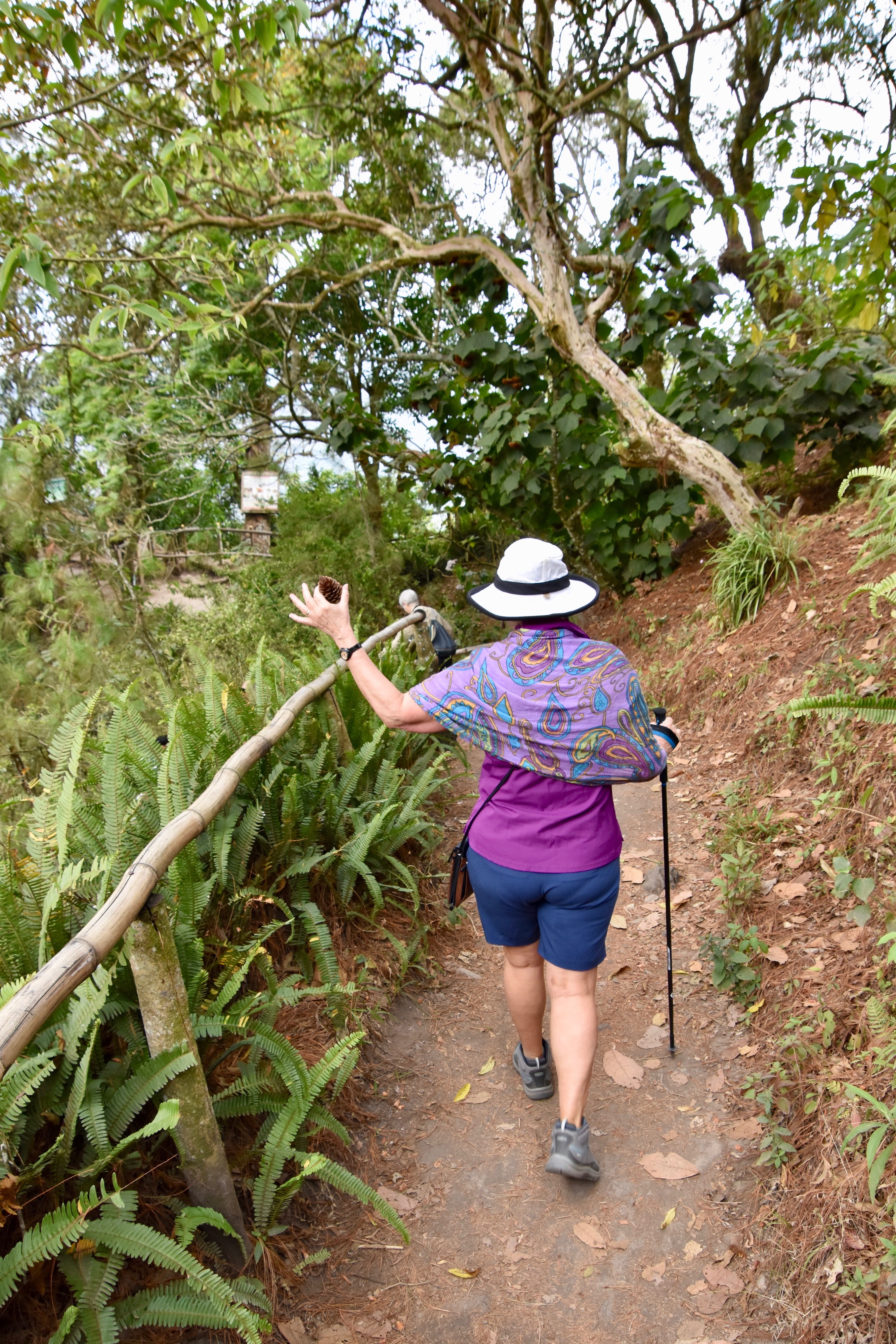
This is an aerial view of El Boquerón to give you a better idea of what you are looking down at from the several viewing platforms.

This is what it looks like from the crater’s edge.
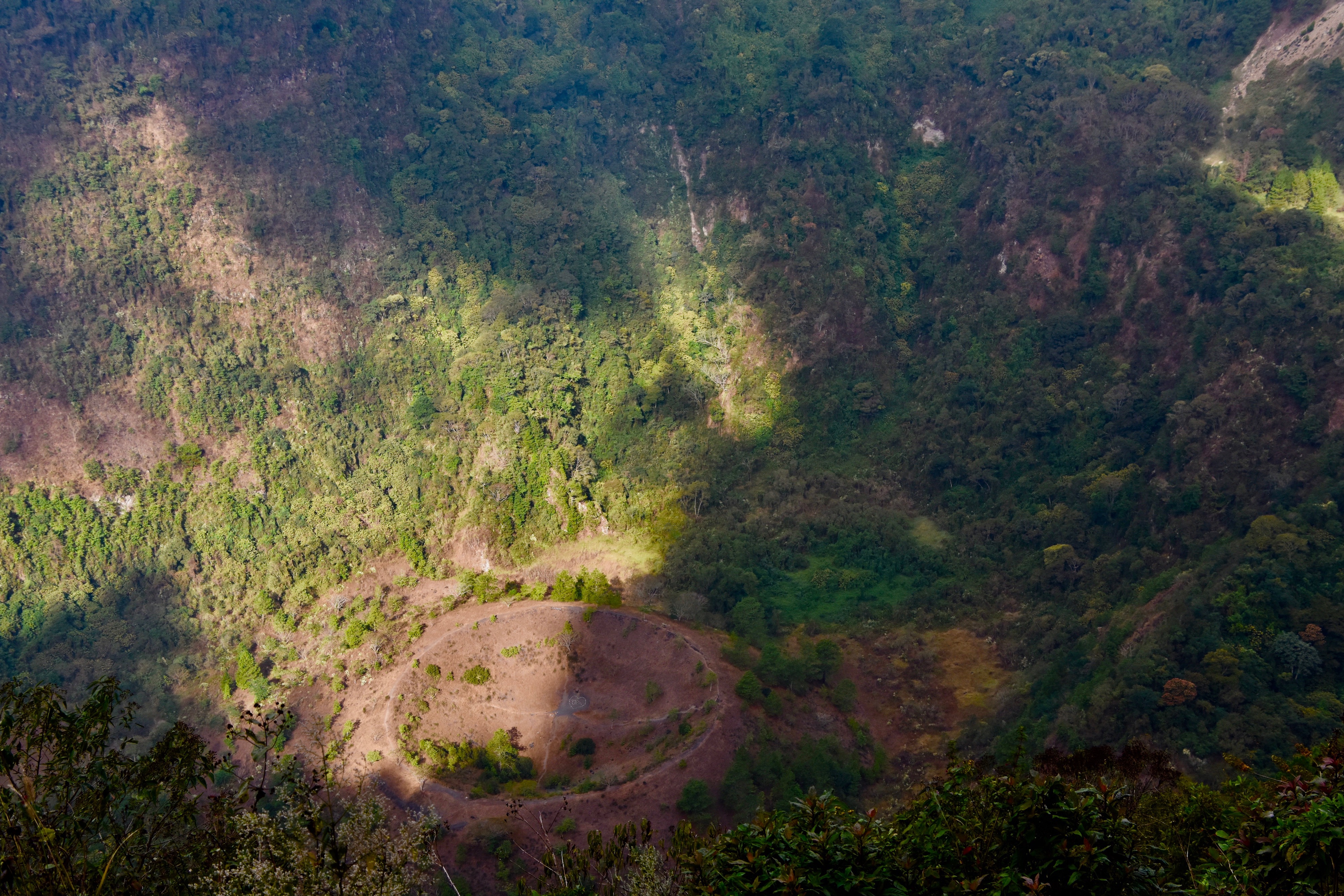
The tiny crater within a crater is boqueroncito which only appeared in 1917. Believe it or not, before that this was a crater lake where San Salvadoreans used to go boating. The birth of boqueroncito literally evaporated the lake in a matter of days.
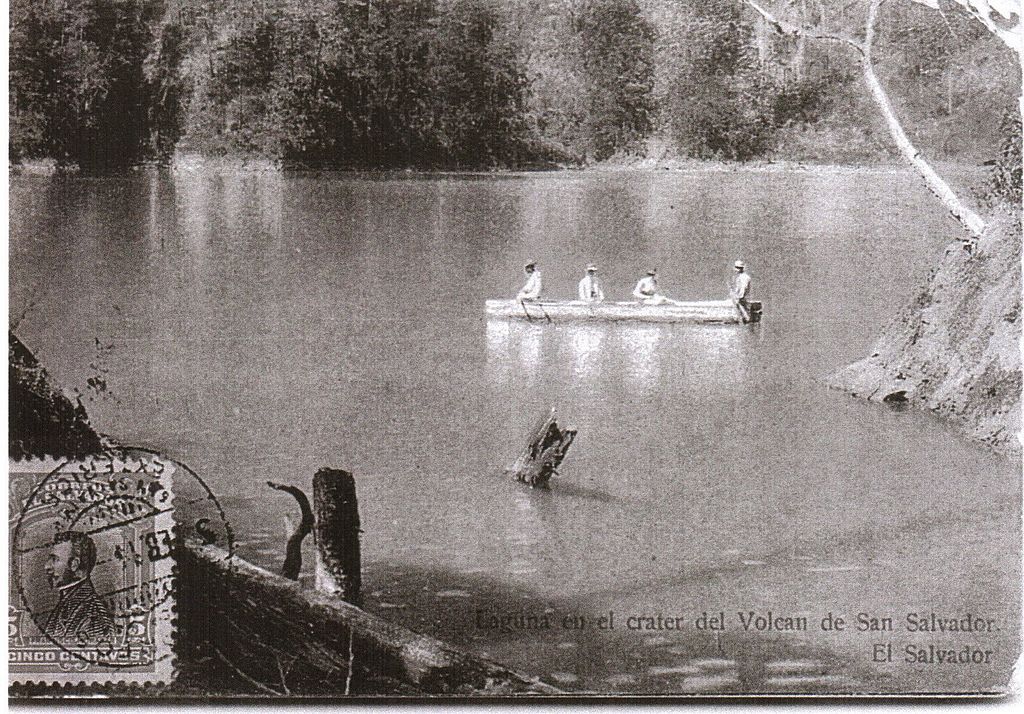
People do hike down into the crater and you can see a number of places where there are paths, but thankfully we are contenting ourselves with just looking from the top.
Back on the bus we grind our way down the hill in low gear until getting back on the main highway heading for our first set of Mayan ruins at San Andres.
San Andres
I have been fascinated by the Mayan culture since I first read about the sacrifice of virgins at Chichen Itza by throwing them into the natural wells called cenotes to appease the rain god, Chaac. That was considered suitable material for our grade five reader at the time. Turns out that further study on the bones found at the bottom of these cenotes reveals they were in fact boys and young men and not girls as previously believed. Chaac was a blood thirsty bastard who even demanded that some of these children as young as three, be flayed alive before being tossed away like human detritus. At least that’s what the Mayans believed – ain’t religion wonderful?
Leaving aside their more sanguine traits, the Mayans were an incredibly advanced culture in mathematics, astronomy, architecture and language. They were only people in the Western Hemisphere to develop a written language. Although most often associated with the Yucatan peninsula of Mexico the Mayans in fact had major cities in Guatemala, Honduras, Belize and at the very southern extent of their empire, El Salvador.
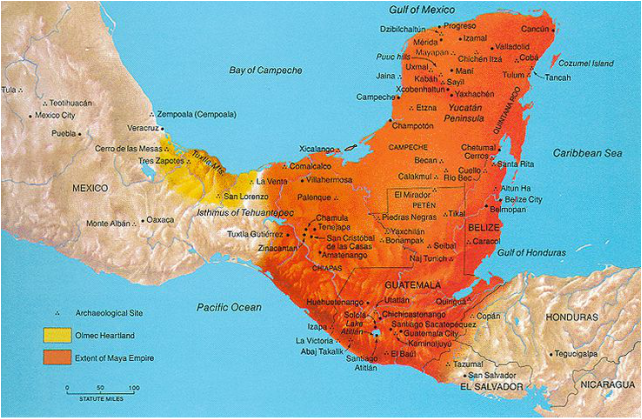
Although by the time the Spanish arrived in the late 15th century the great Mayan cities had all been abandoned, the Mayans themselves still remain to this day, but not in El Salvador. The Indigenous people here at the time of the conquest were Pipils who spoke a Nahuatl language and descended from the Toltec/Aztec peoples of central Mexico. One of the great archaeological mysteries which is still hotly debated today is why the Mayan civilization collapsed. How did they go from being urbanites living in cities of up to 200,000 people in the case of Tikal to a bunch of disorganized feuding tribes that fought the Spanish guns, dogs and horses with obsidian spears? We won’t find the answer on this tour, but it’s going to be a lot of fun looking, starting with the small site of San Andres, just north of San Salvador.
San Andres was first settled almost 3,000 years ago, but was abandoned in the fifth century A.D. due to the explosion of nearby Ilopango an event so cataclysmic that it is now thought to have been responsible for a world wide cooling that took place in 535 and 536. What you see today dates from the period named the Late Classic – 600-900 A.D. The city had direct ties with Copan in modern day Honduras which we will visit later on this trip. It is quite unusual in that many of its structures are made from adobe bricks and not cut stone like almost all other Mayan ruins. It’s not a large site, but given that it’s our first, I’m pretty excited.
Here is a map of San Andres. You enter from the south side and basically explore all the structures within the Acropolis area. Structure 5, La Campana is now completely overgrown and the area between it and the Acropolis is fenced off. There is also a small, but pretty good museum on site which features artifacts from San Andres and from a later period when there was an indigo farm here.
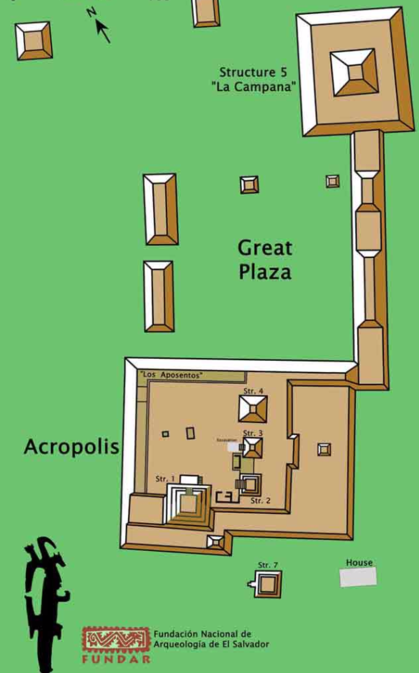
This is an aerial view of San Andres and as you can see, unlike many of the sites we will be visiting later on in this trip, the major structures are all fenced off.
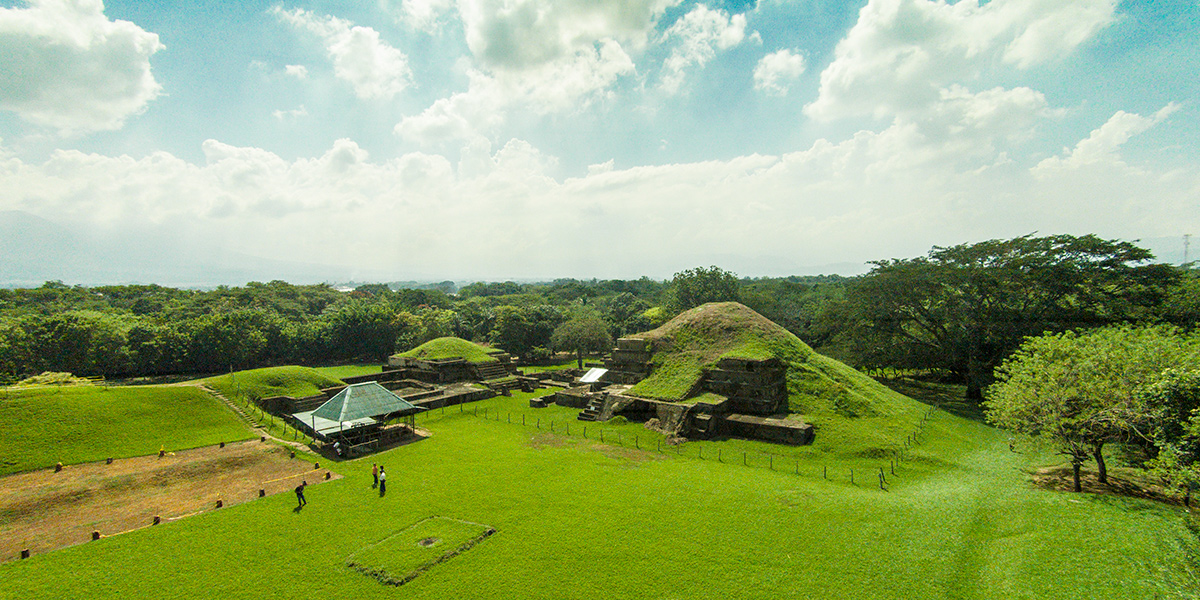
The closest you can get to Structure 1, which is the largest one in the picture above, is to stand in front as Alison an I are doing in the photo taken by Victor.
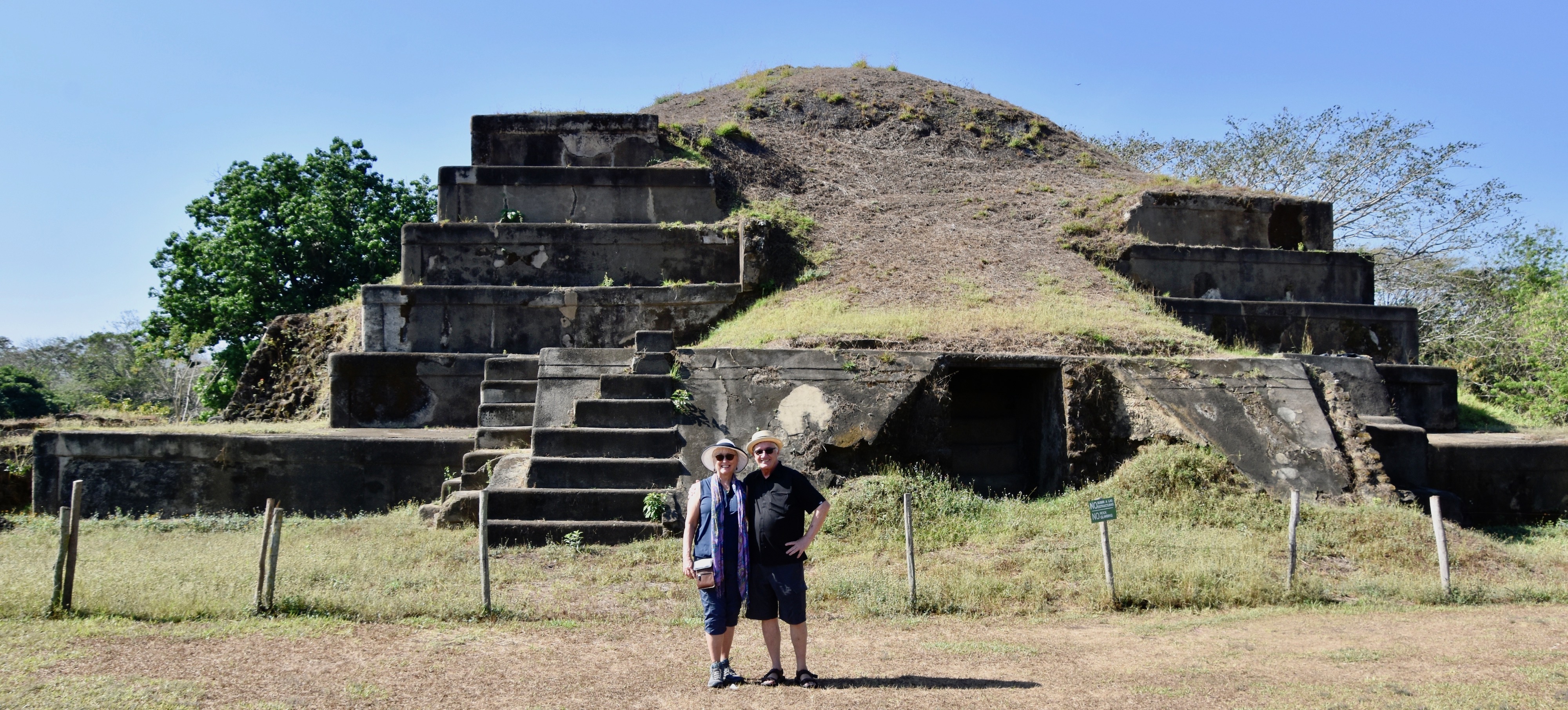
By Mayan standards, at less then 50 feet (15 metres) this is a pretty puny pyramid, but it’s a start.
This photo shows some of the adobe brickwork that makes up most of the building material at San Andres
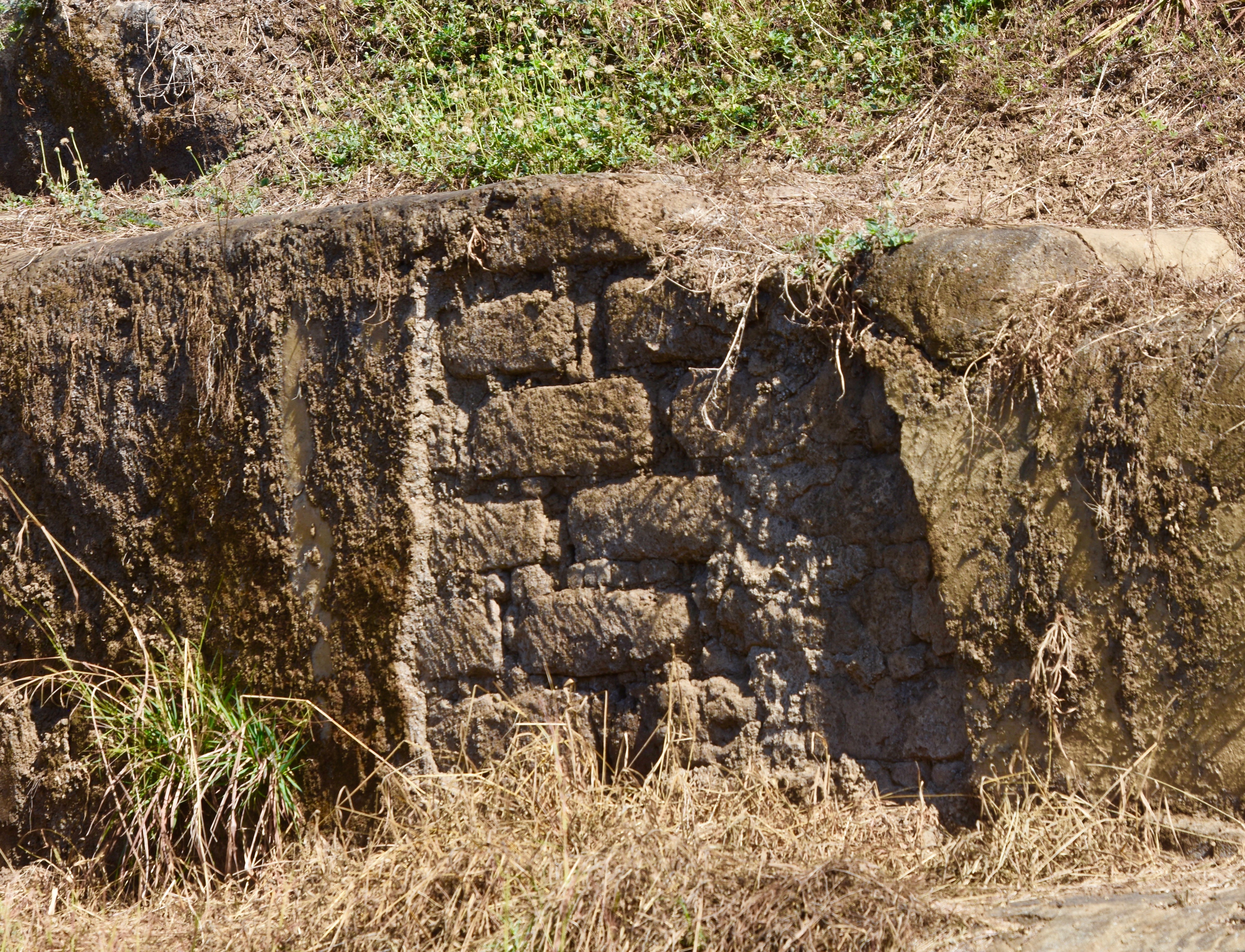
This is Structure 7 which sits outside the Acropolis complex and is actually the first one you come across at San Andres.
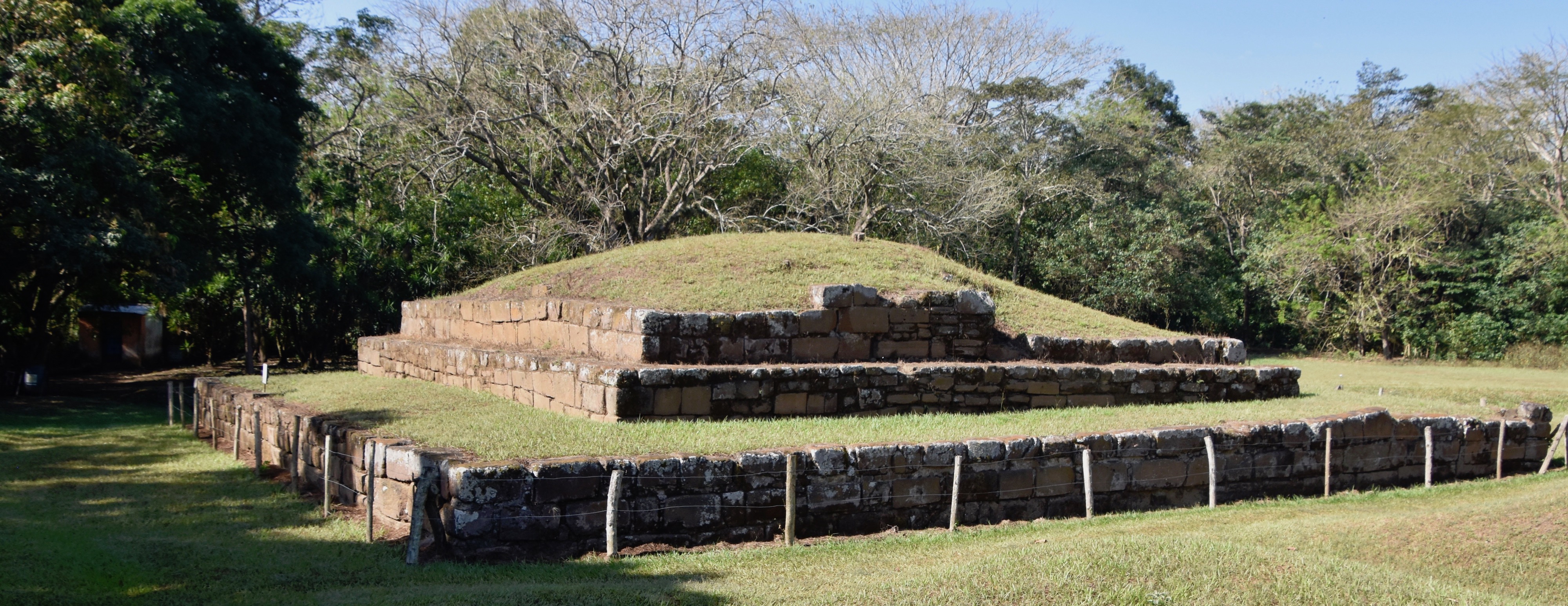
This photo which at first looks like not much of anything, was taken standing on the northern edge of the Acropolis overlooking what would have been the Grand Plaza with La Campana being that mound on the far right. At one time this area was totally cleared out, but too many looters were coming to the site doing unauthorized digs so it was allowed to regrow, It’s a good illustration of just how fast and completely the tropical forest can overrun and hide even something as large as La Campana.
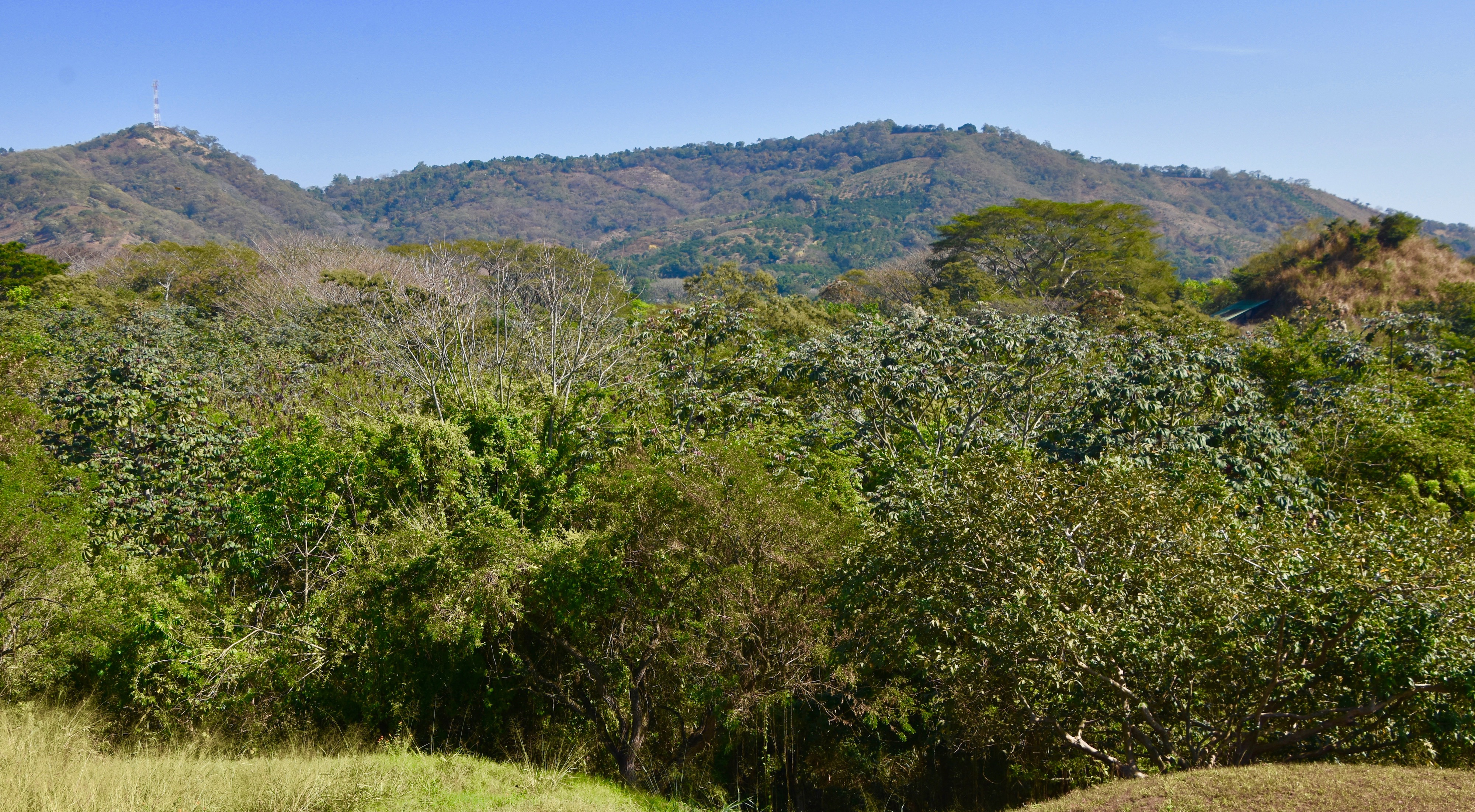
Ok, so were weren’t exactly bowled over by San Andres, but it has definitely whetted our appetites for more starting with Tazumal tomorrow. Originally Victor had planned to take us to the UNESCO World Heritage Site of Joya de Ceren which is nearby and preserves a small Mayan village that was completely engulfed by volcanic ash during an eruption in the 7th century. Somewhat ambitiously dubbed “The Pompeii of the America”, it was recently closed for safety upgrades and scheduled to reopen in May of this year, but with Covid-19, who knows?
Hacienda Los Nacimientos – Visit to a Working Indigo Farm
What exactly is indigo? Well actually a lot of things starting with one of the seven colours on the spectrum, landing between blue and violet. The colour was actually named for the dye produced from a variety of plants of the indigo family. What is this dye used for – think no further than blue jeans and you’ll know why for a long time in history indigo production was one of the most important industries almost all around the world. The oldest indigo dyed cloth discovered in Peru, dates back over 6,000 years and the Mayans certainly used it long before the Spanish arrived. Tiny El Salvador turned out to be a great place to grow indigo and by the 18th century it was the country’s most important crop, often called ‘blue gold’. I noted that there was an historical indigo farm and production facility at San Andres, one of hundreds in the nation.
But then along comes Adolph von Baeyer who invents a synthetic dye in the late 19th century and poof, the entire industry disappears almost overnight.
Fast forward another century or so and a revived interest in ‘natural’ products breathes life back into indigo dyes from actual plants and El Salvador is once again seeing a growth in this once dormant method of production. So we are headed to one of these new indigo farms right now; not just any indigo farm, but one of only two in the world that is apparently truly ‘organic’. Hacienda Los Nacimientos grows a number of organic crops including indigo plants and creates the dye on site using traditional methods that are similar to what they were doing at San Andres centuries ago. The farm also offers the chance to make your own creations using their own dyes. It’s not that easy to get to, being well off the main north/south route from San Salvador to Honduras. We go from pavement to gravel to a country lane that would be impossible for two vehicles to pass each other in all but a few spots. In places sugar cane as tall as the bus impedes the view, but mostly it’s a very pleasant rural countryside with the mountains all around in the distance. For a country as densely populated as El Salvador this place is virtually empty.
The farm is large, but the area where the tourism takes place is a mostly wooded and shady arbor of hardwood trees. Our guide explains that we will start out with a walk to the indigo processing area along this path.
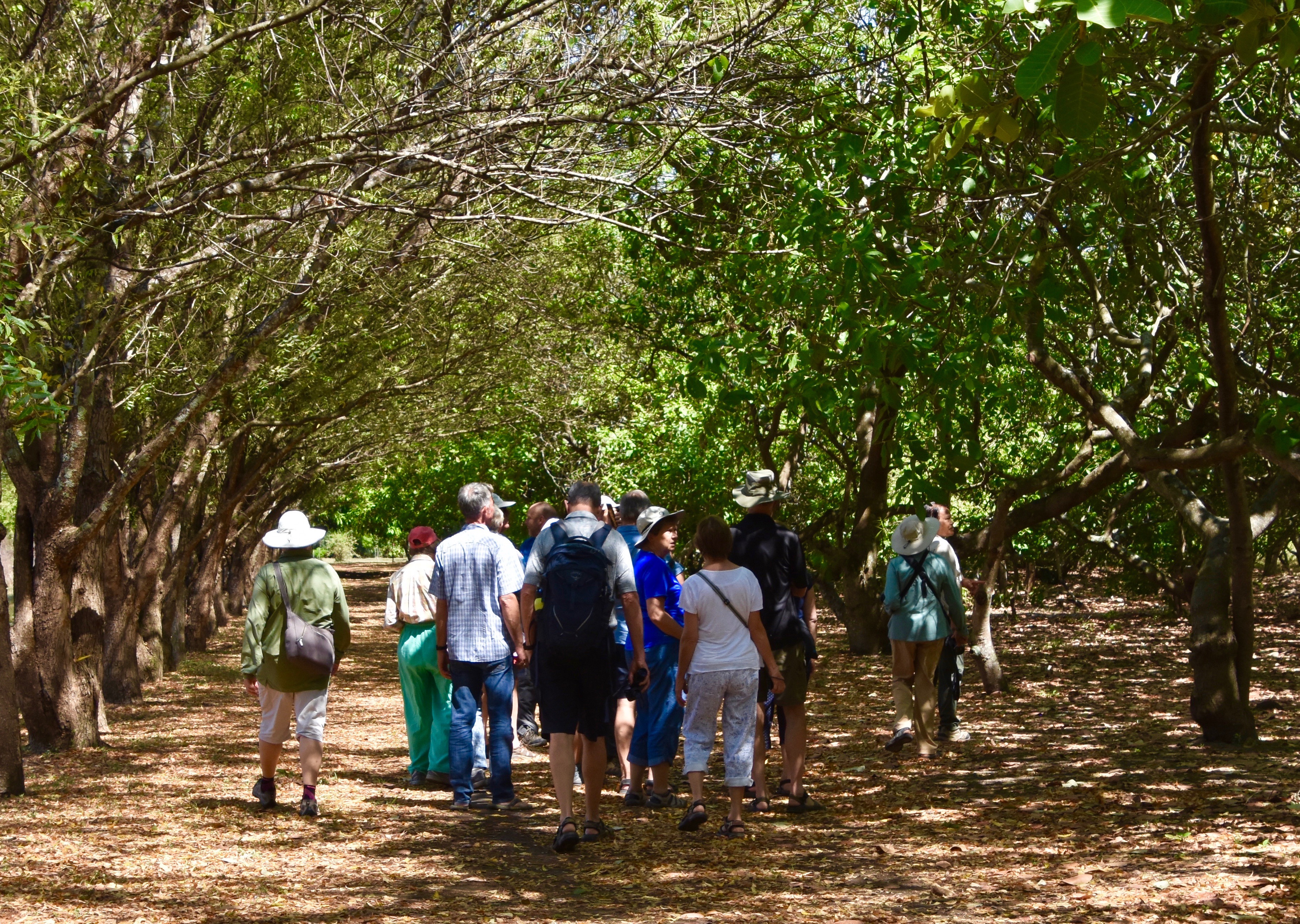
Along the way Alison stops to take a picture of what I thought the guide described as an empire flower, but I must have heard him wrong because I can’t find anything about such a flower/tree/shrub anywhere. Whatever it’s called, it’s a nice specimen.
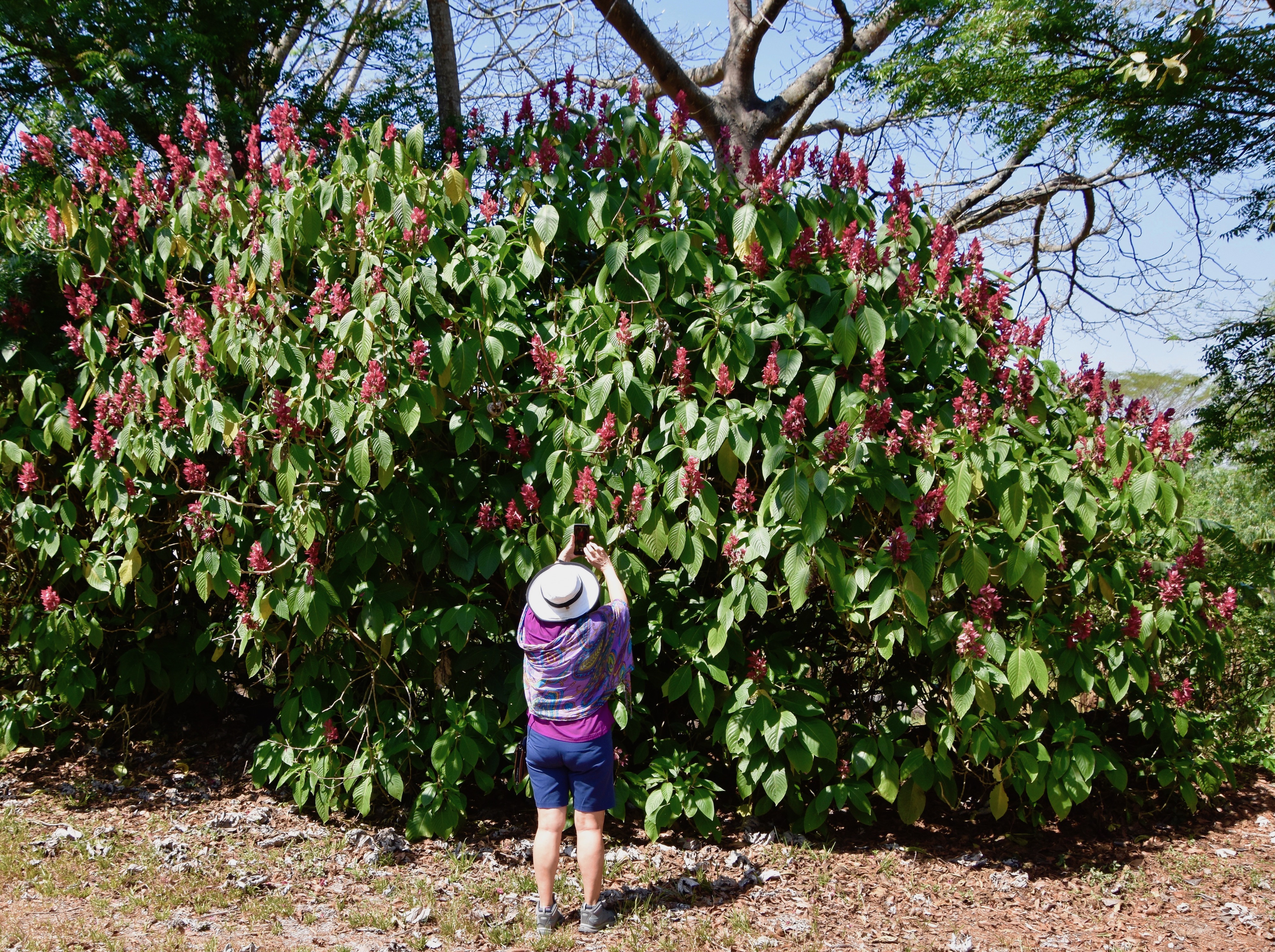
We arrive at the indigo production facility, technically an obraje and nothing’s happening. Obrajes were first developed in Puebla, Mexico to process wool from start to finish and the name has stuck for any type of facility that produces some type of finished product – ‘workshop’ would be a good sysnonym.
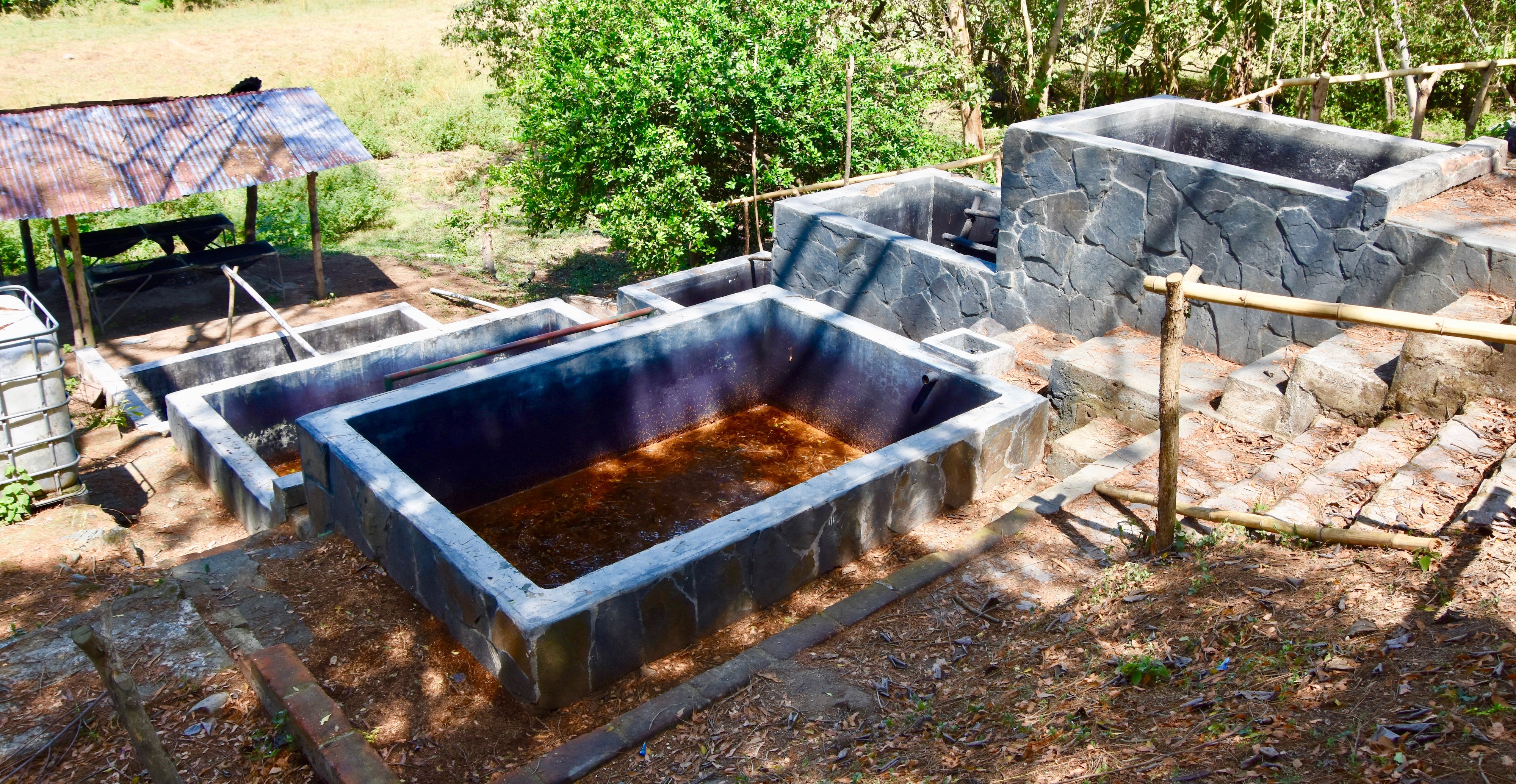
Our guide explains the process that we would have seen had we been here in the season when the indigo plants were harvested. We saw a few fields of them on the way in and you would never know that these scraggly looking plants we saw today will produce beautiful purplish blue flowers (that would be indigo you twit) in a few months.
Walking back by a different route we passed through a cashew grove. I had no idea that there was such a thing as cashew fruit or a cashew apple as the thing Alison is holding is called. It is quite tasty and very juicy which explains why it so perishable. You eat it at the tree or not at all in most cases.
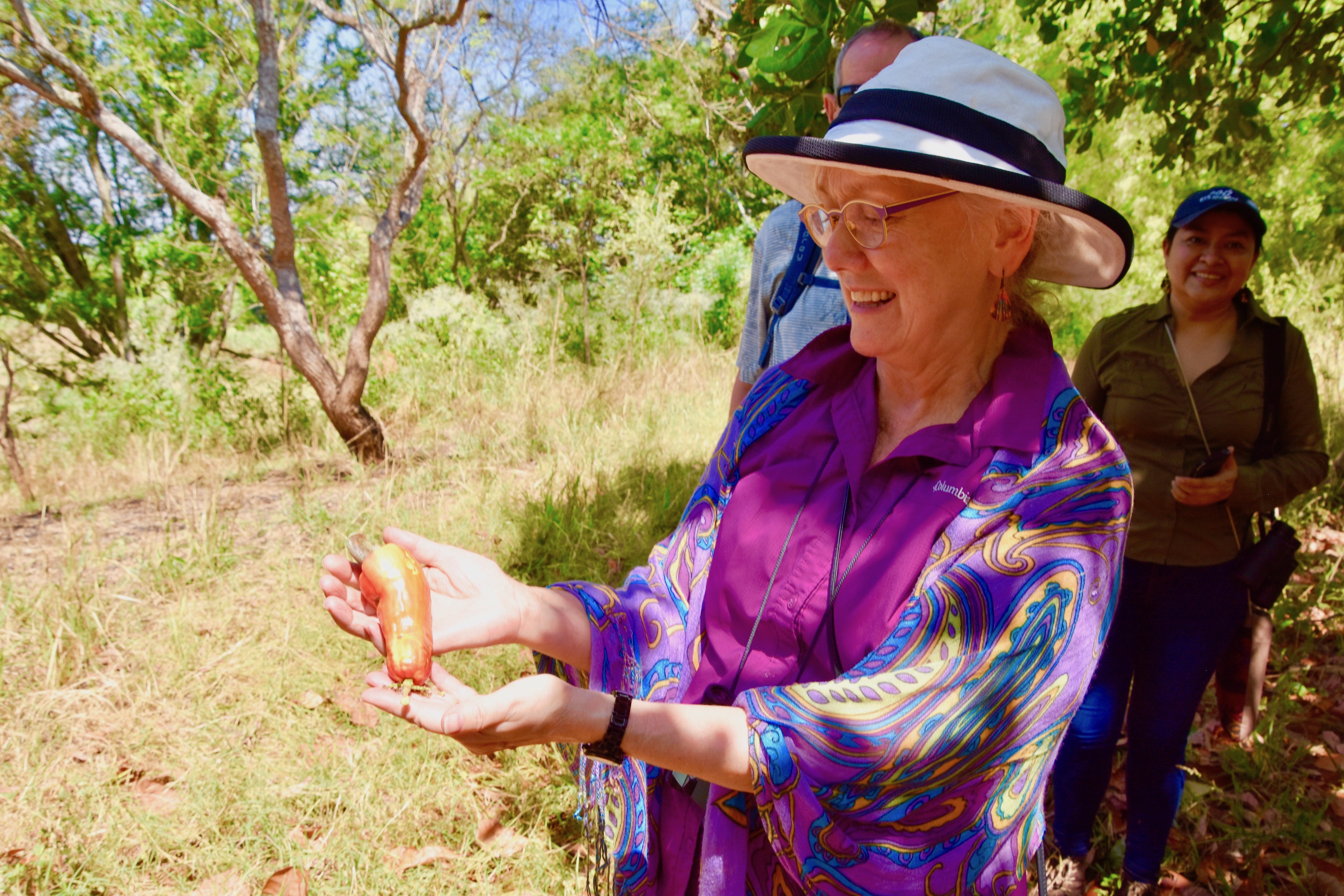
Now if this was a real apple there would be seeds inside, I mean after all, everyone knows that seeds or nuts are found inside the fruit, right? Not in the case of the cashew where the nut grows outside the fruit in something that almost looks vaguely obscene.
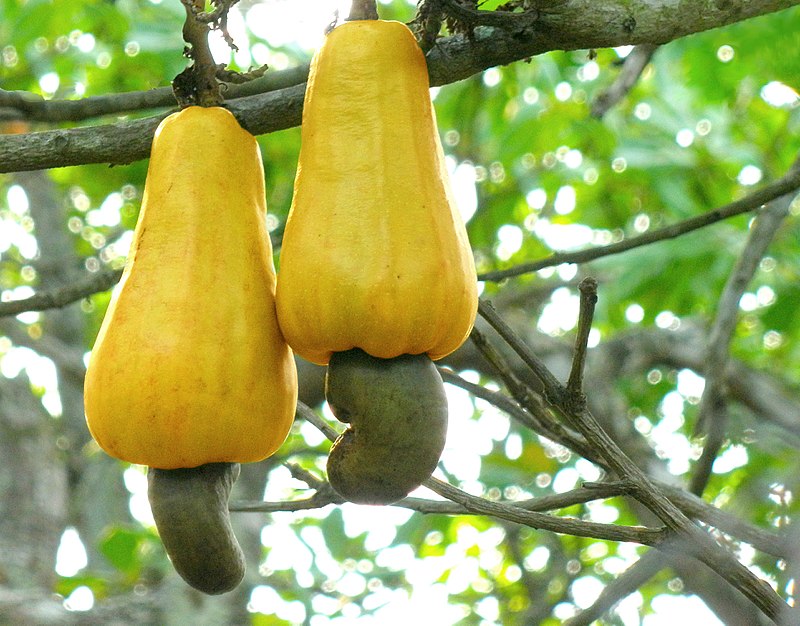
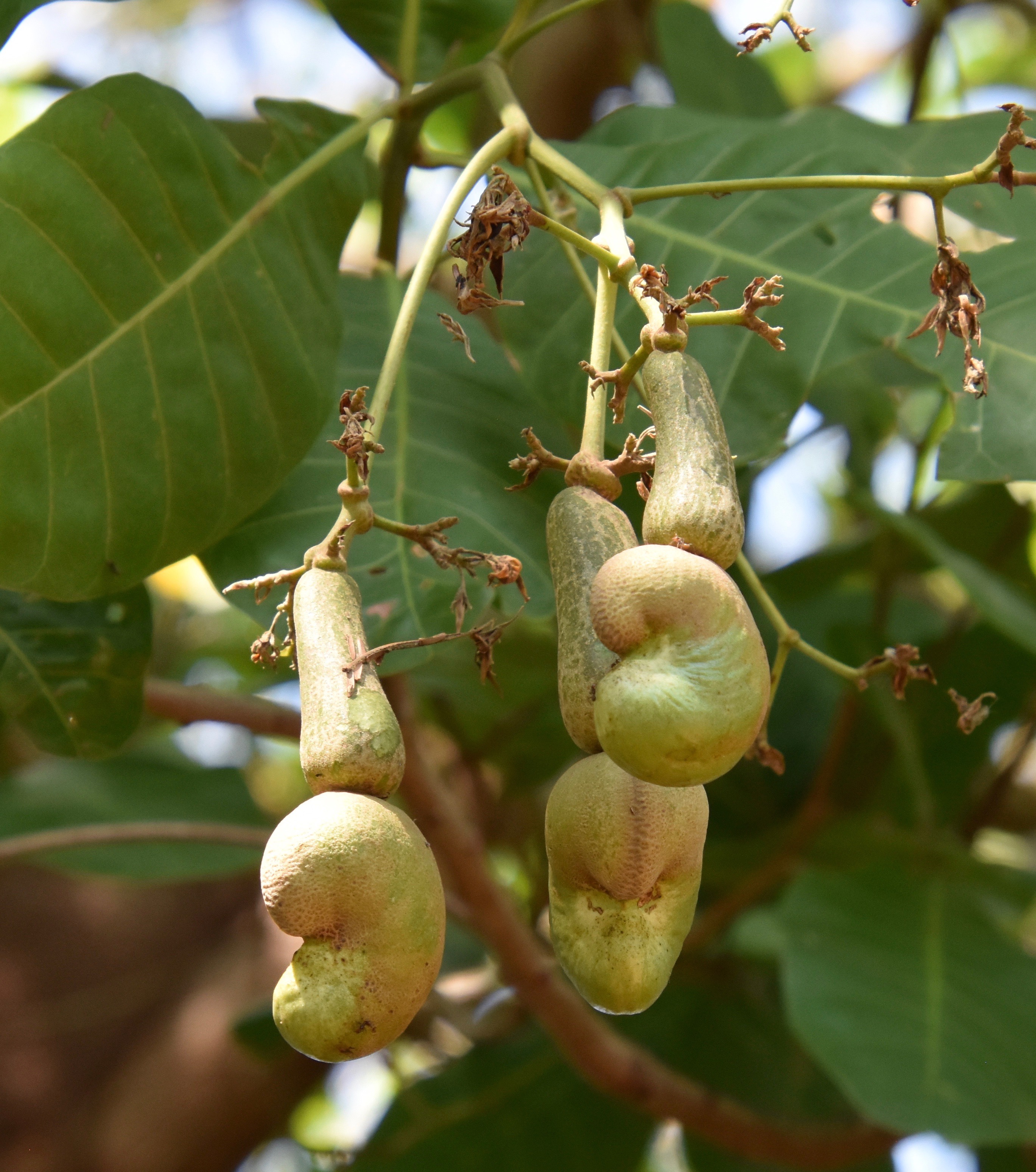
Once the fruits fall away you are left with these little suckers which encase the actual nut that we eat in a coating of anacardic acid, the same thing found in poison ivy. That’s why you can never buy cashews in the shell. They need to be removed and cleansed before they are edible.
Ok, now that you know everything there is to know about cashews let’s finally get to the tie-dyeing.
Not being known for my artistic prowess, I’ve never tie-dyed in my life and don’t intend to break that record today. I’ll act as photo-journalist instead recording every detail of this event that I’m told is a first for Adventures Abroad. Essentially tie-dyeing is nothing more than creating cool looking patterns on cloth by exposing some parts of the cloth to dye and keeping others away from it. Today my subjects will be working with just indigo so all the patterns will be indigo & white.
The first part involves some intricate folding – a prior knowledge of origami will be a definite asset. Inside the folds you wrap various objects to get different results. Here Alison is using small glass oval beads which is quite time consuming and would involve patience I don’t possess.
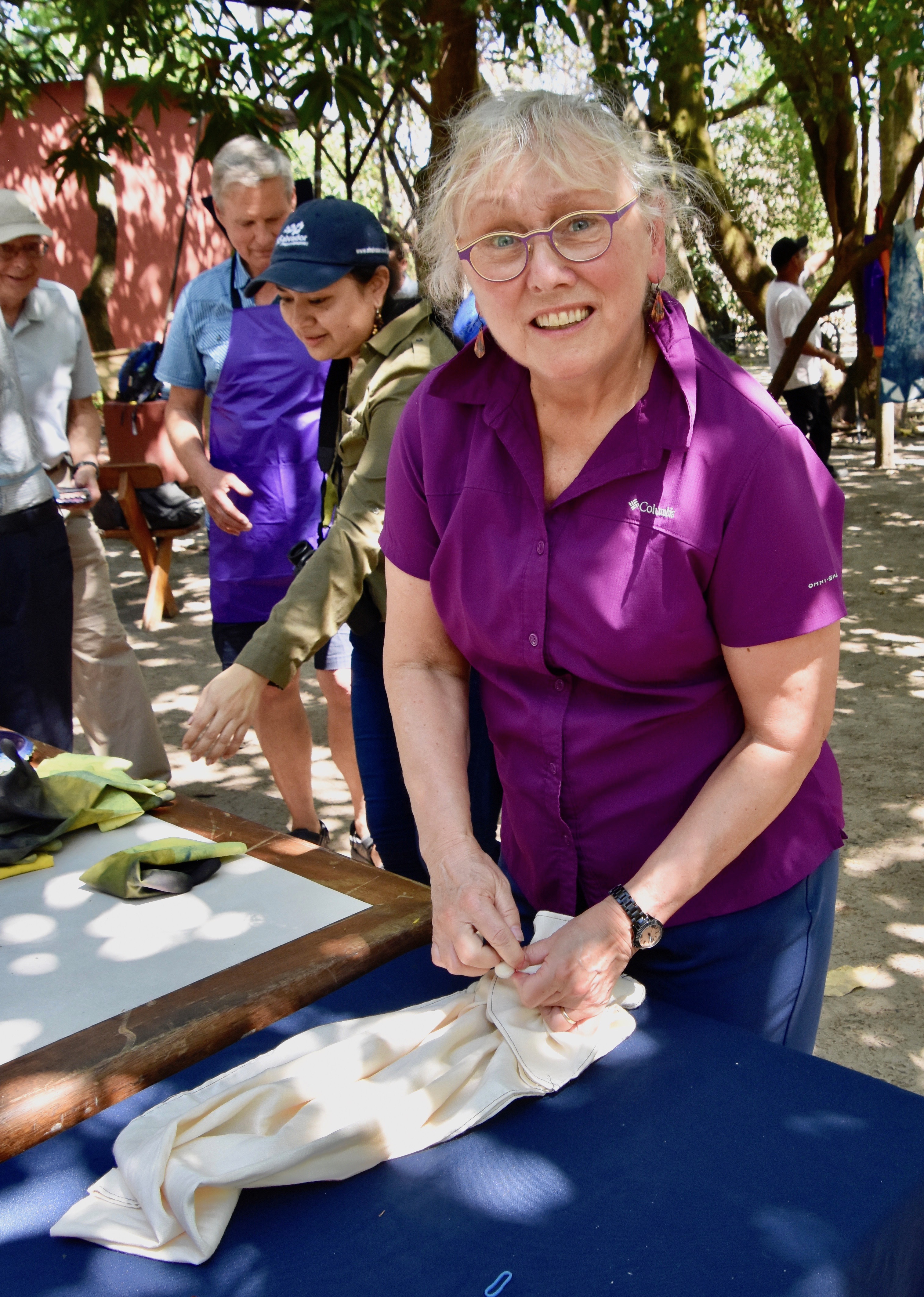
Then you come to the tieing part of tie-dyeing as Victor demonstrates here.
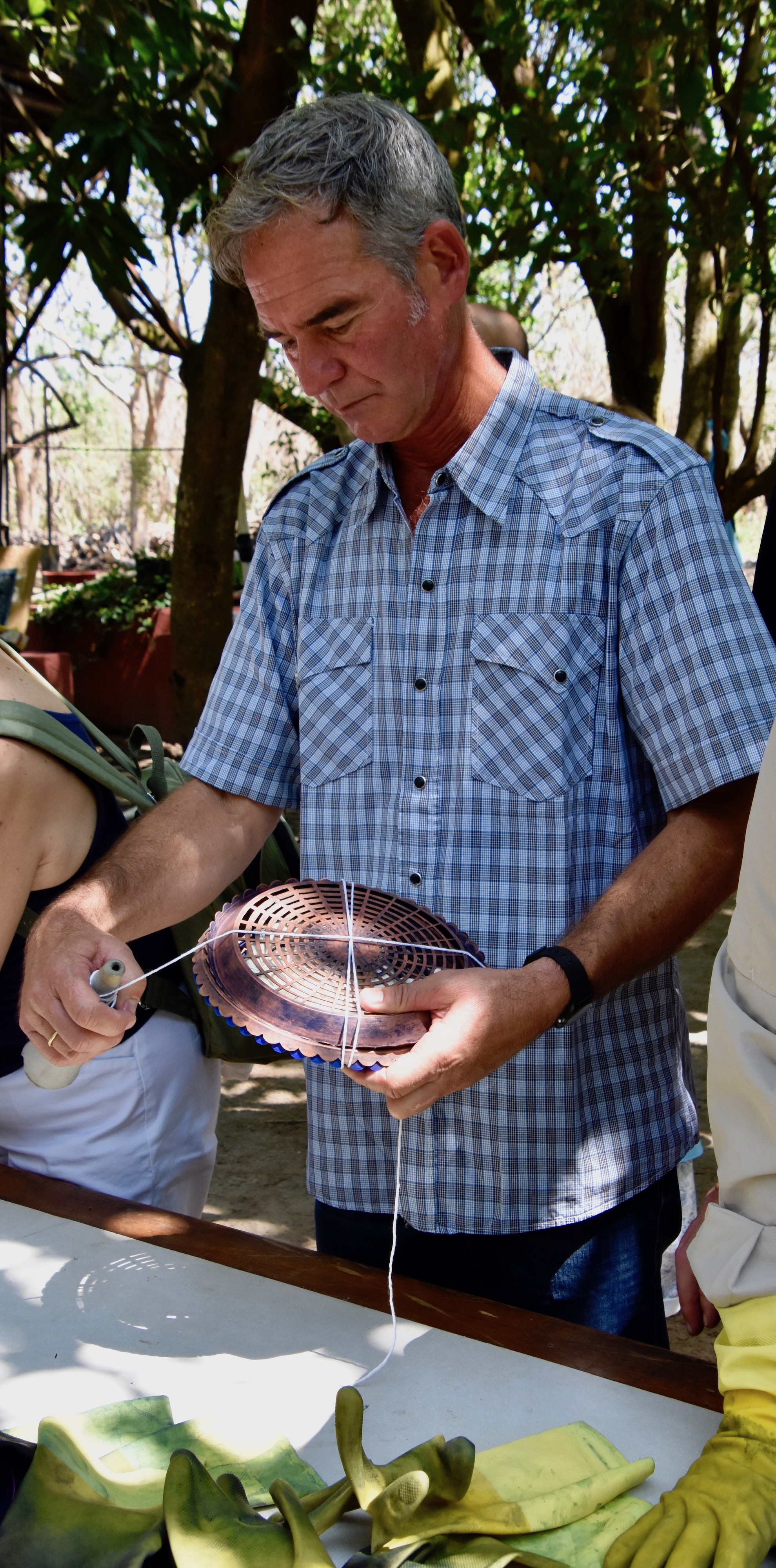
A little help from an expert is never a bad thing. I didn’t realize that Mike Myers retired and moved to El Salvador.
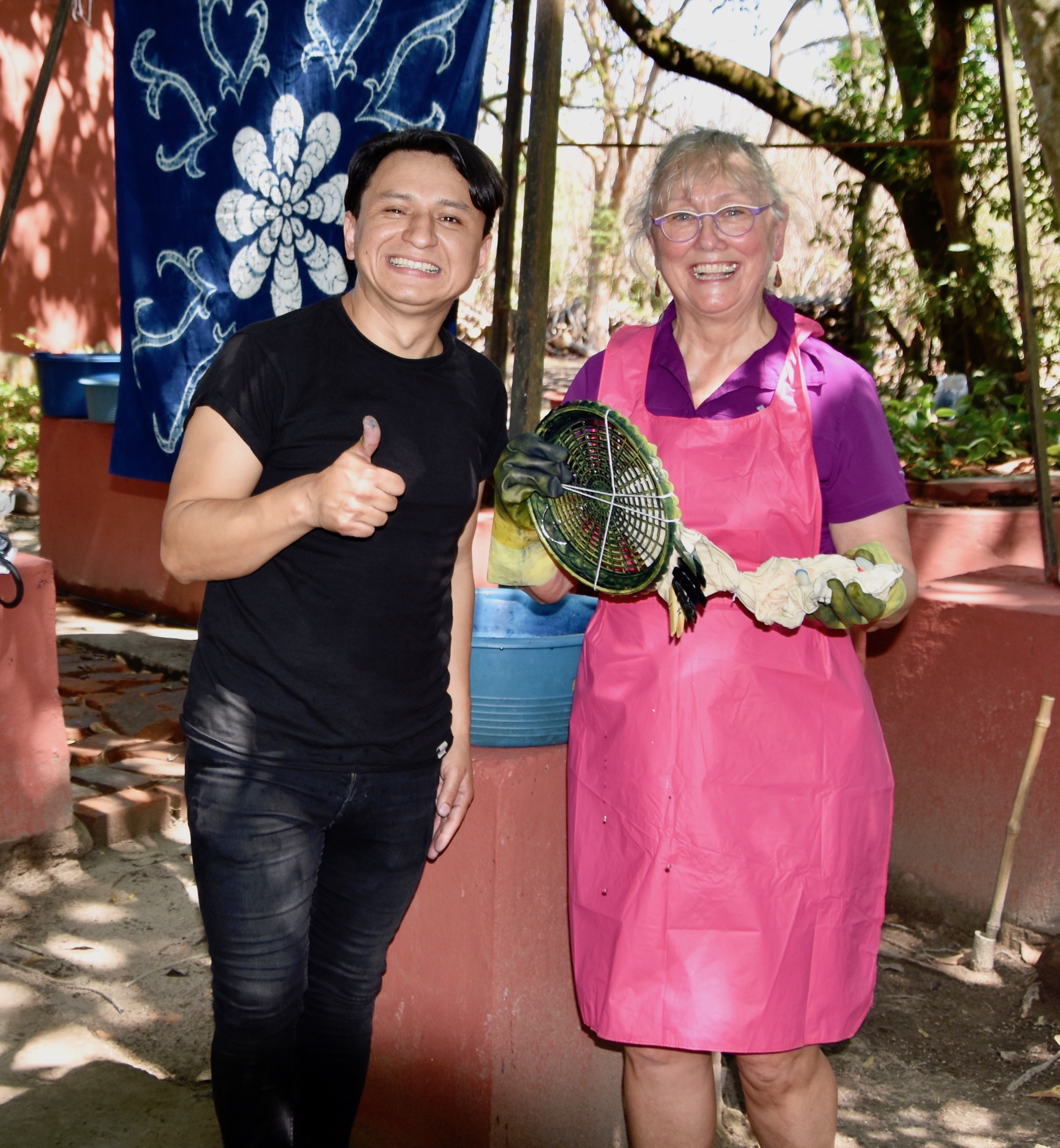
Next is the part that kids would love. You need to dunk your cloth in the indigo dye three separate times. It’s very messy and you probably should be wearing jeans. Alison and Sherrie actually seem to be enjoying this.
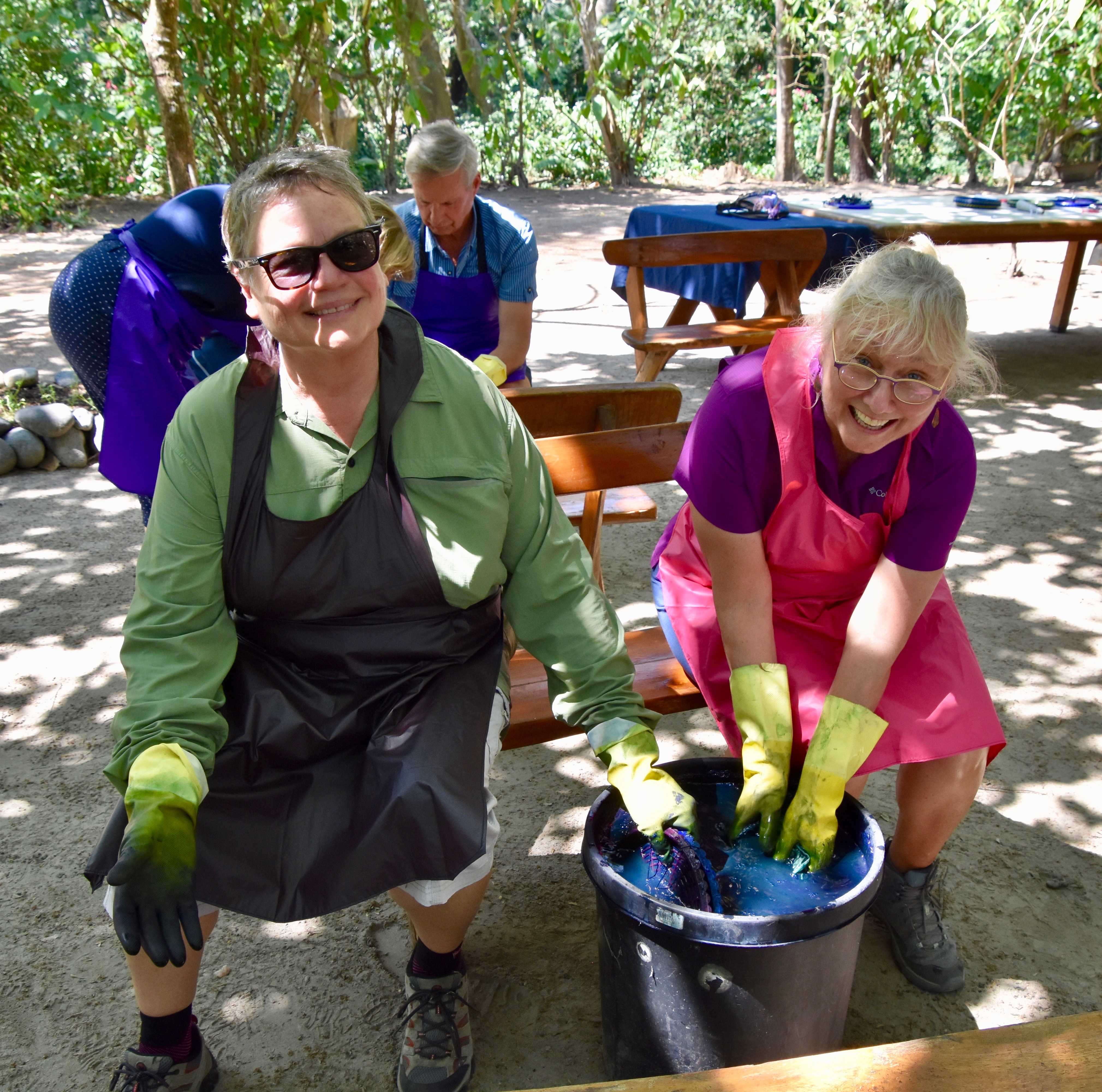
Lastly the things are all hung up to dry will we all head for lunch.
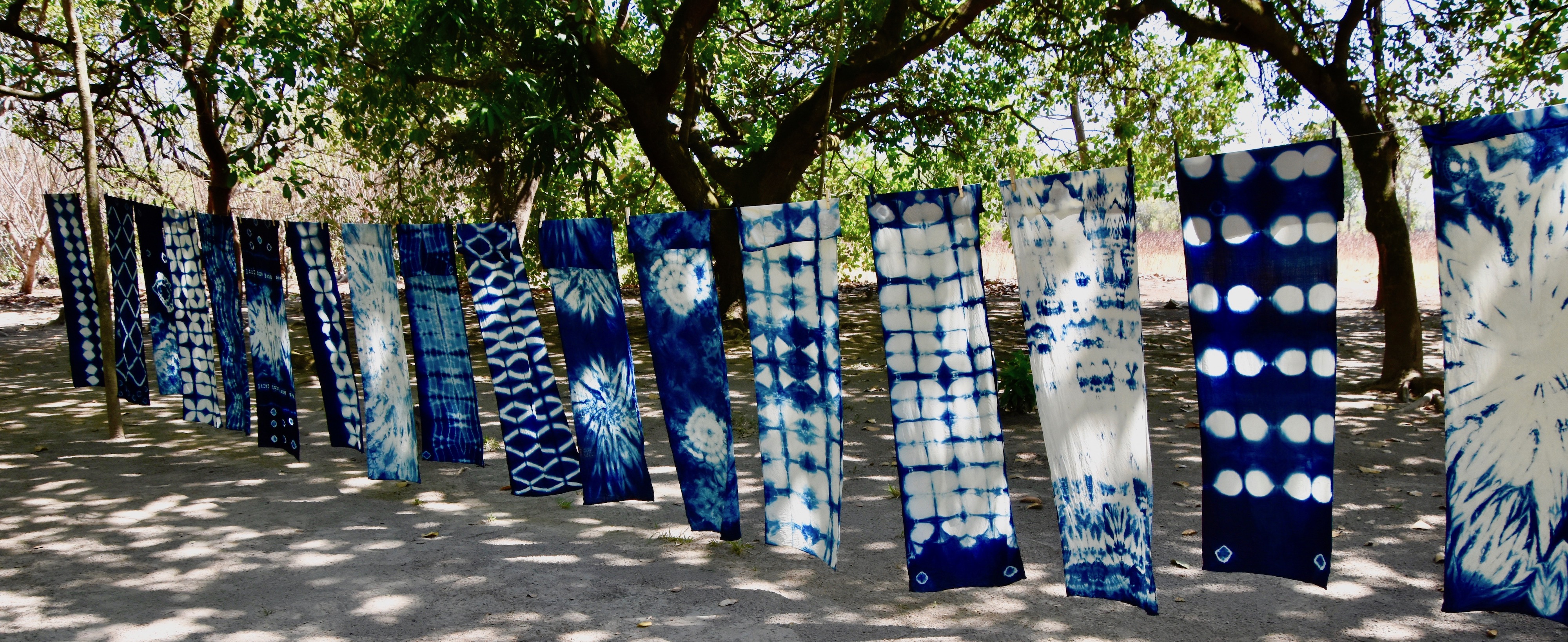
While my subjects have been toiling away, so has the indigo farm chef preparing a great al fresco mixed grill.
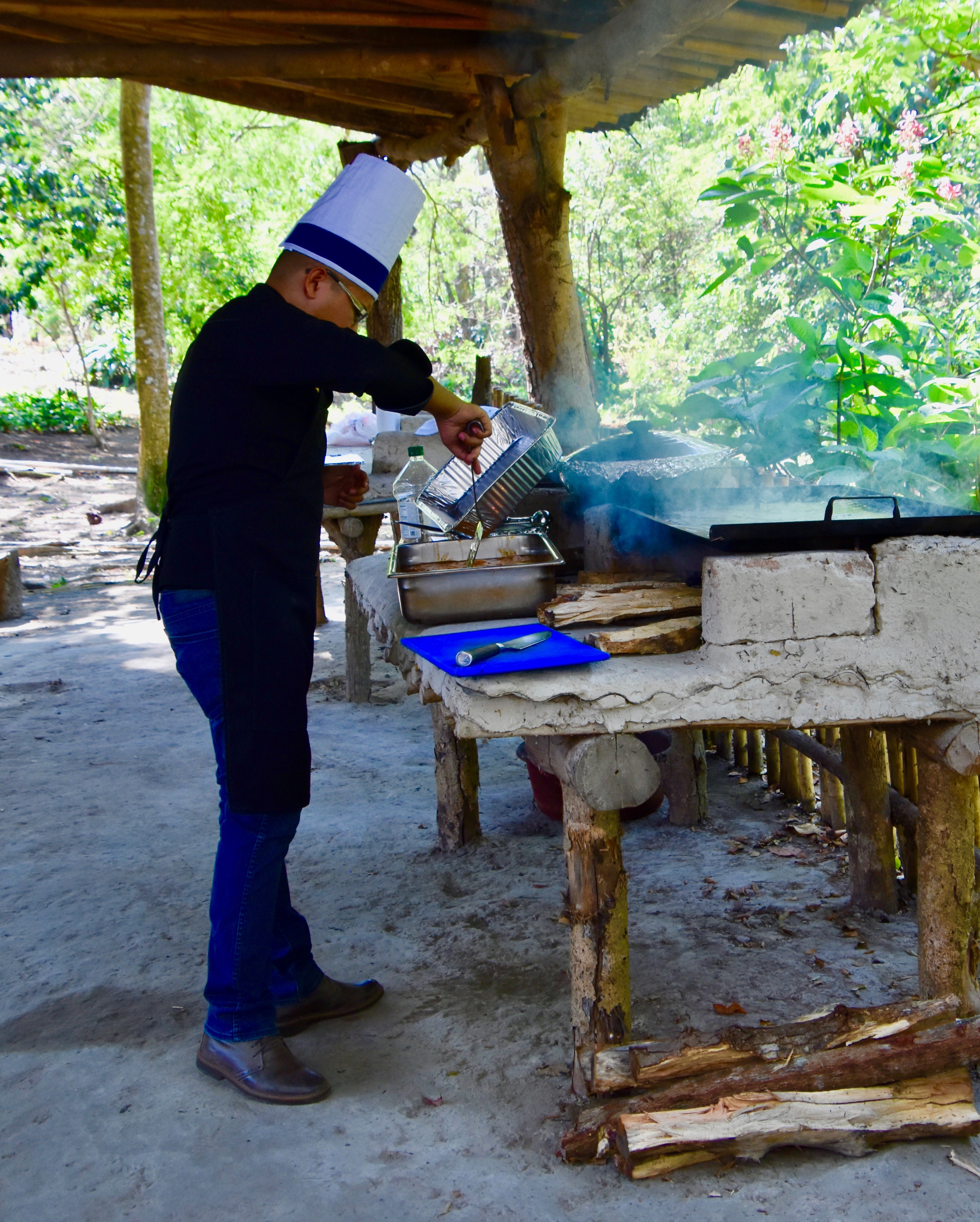
And here it is.

Before the group reassembles at the indigo farm tie-dye clothes line, some of us take a brief detour to see a Pacific Screech Owl, a species found only in Central America and parts of Mexico. He’s just as curious about us as we are of him.
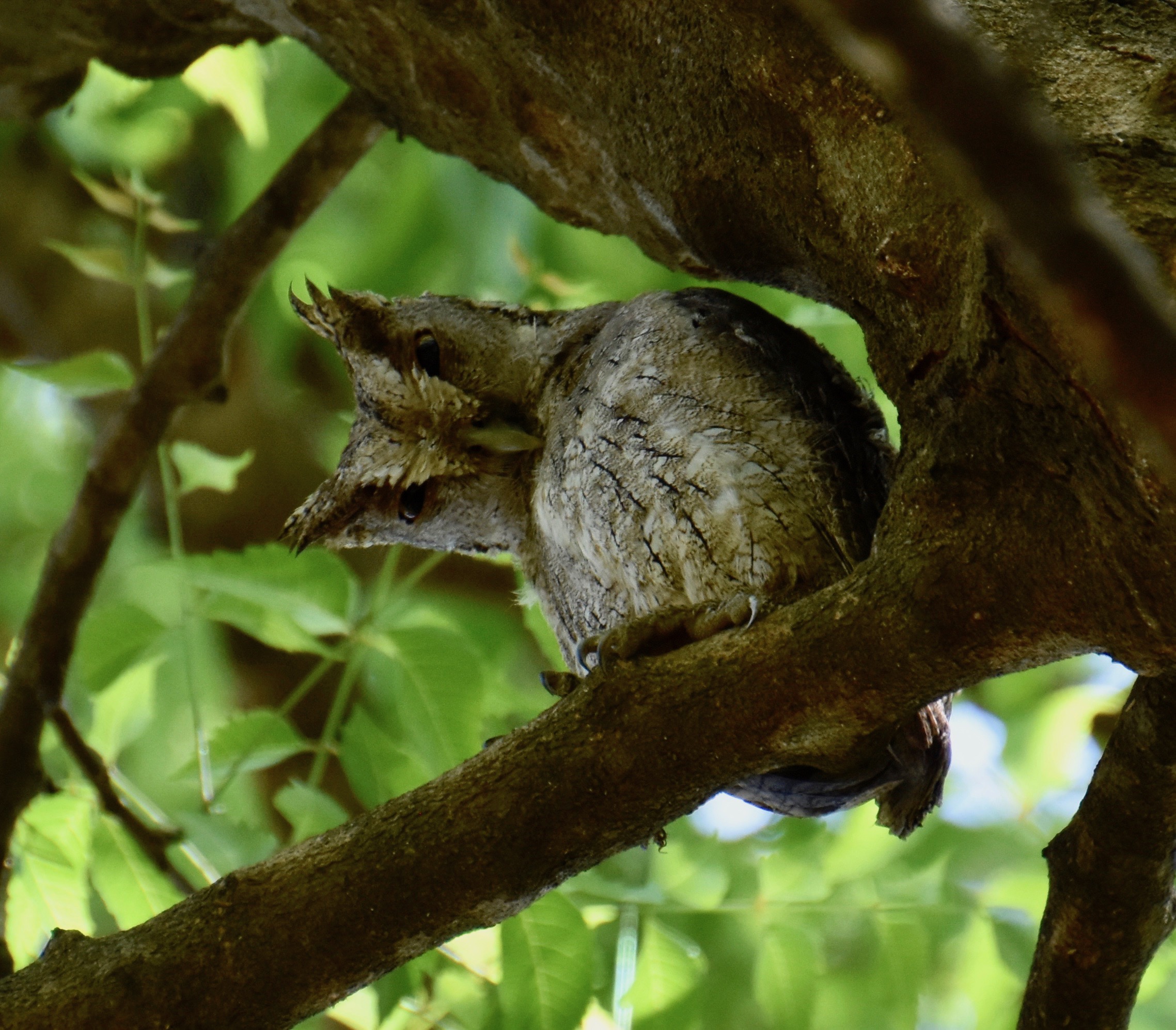
Back at the farm the artisans line up with their creations. Actually pretty damn impressive.

Here is Alison’s.
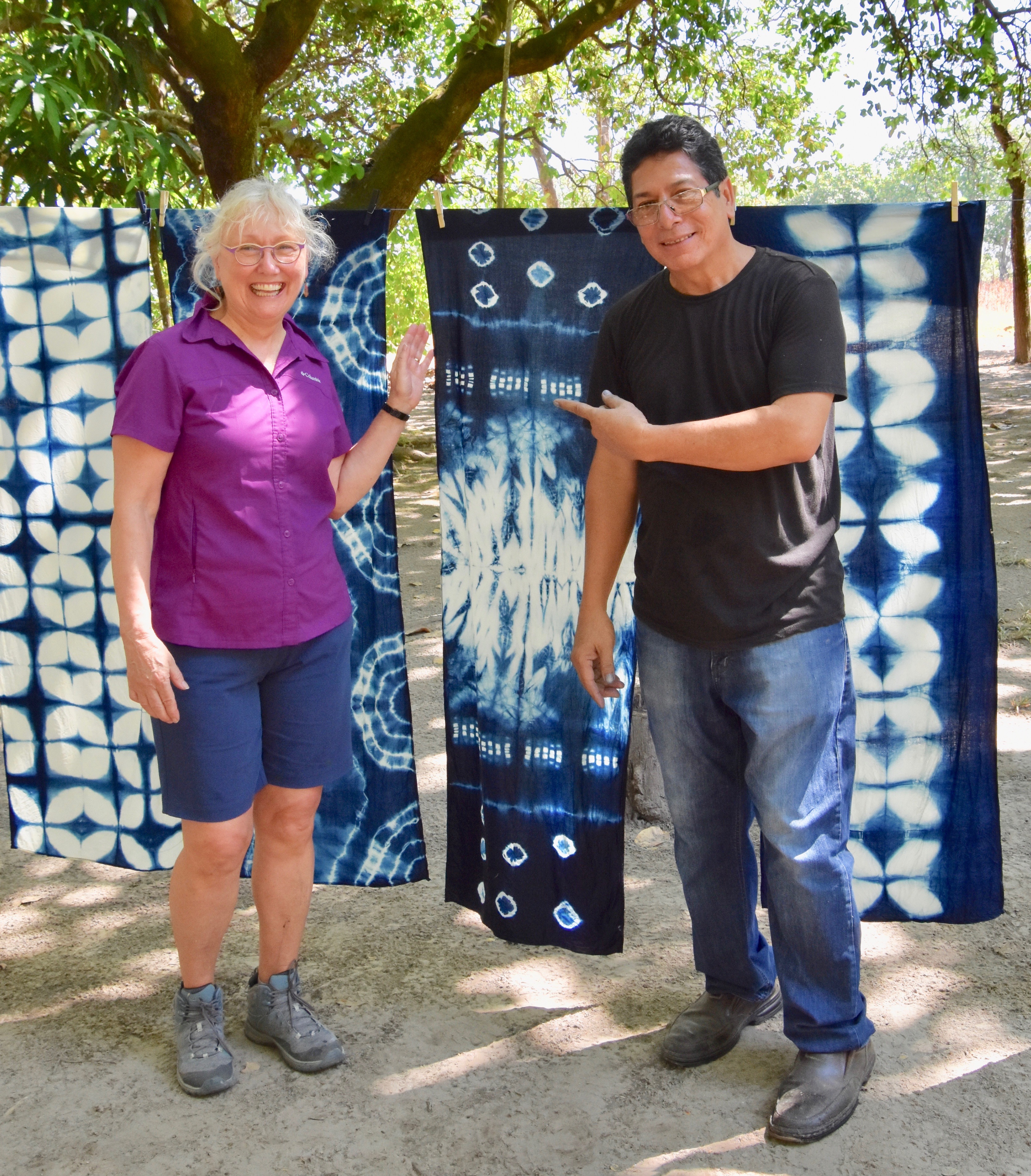
It’s time to leave the indigo farm and head back to San Salvador using a different route that takes us through the town of San Martin.
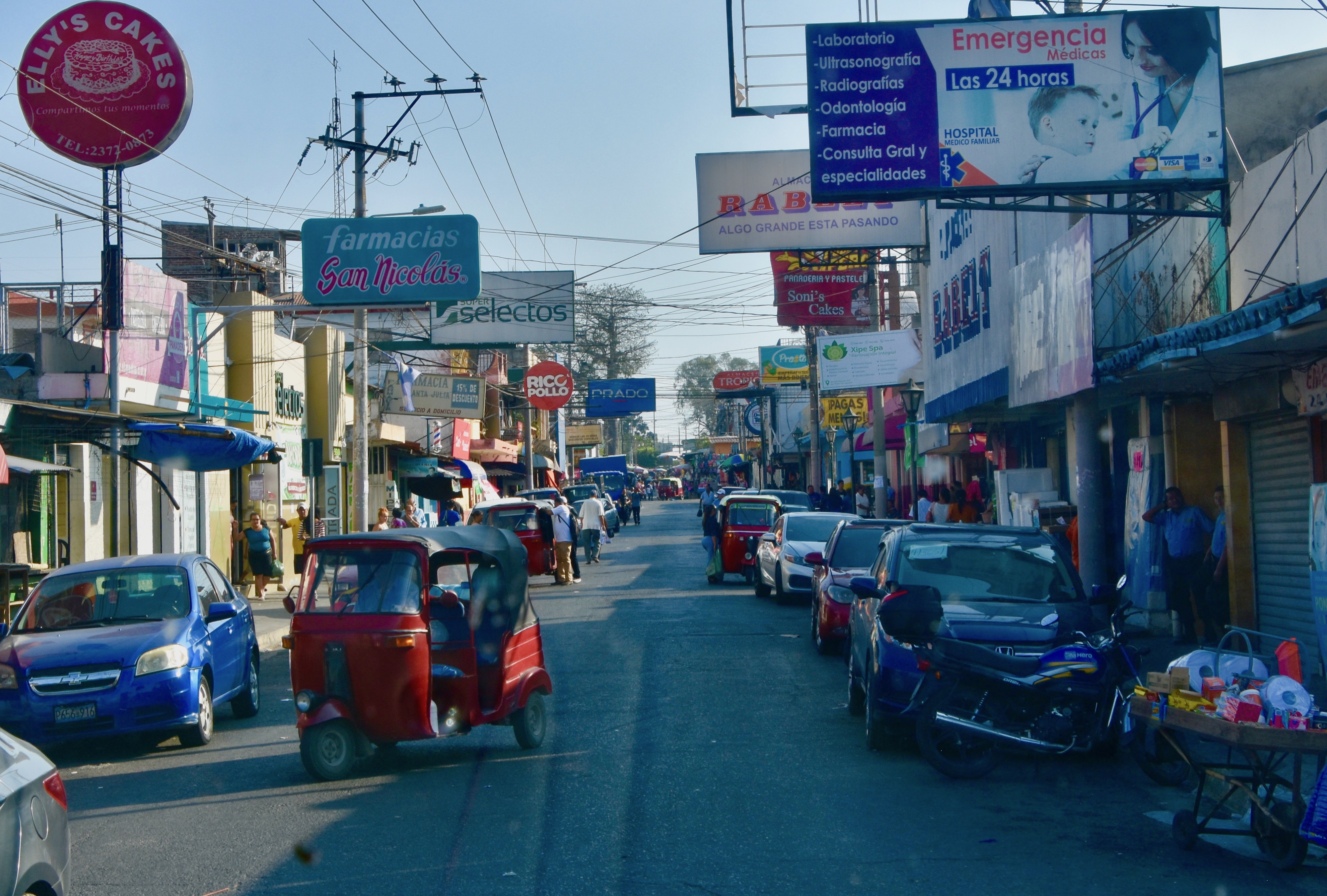
Another great day of varied adventures, but now it’s time to head for Churchill’s for another one of their great martinis. Tomorrow we explore more of the country as we leave San Salvador and discover the Ruta de la Flores and the Mayan city of Tazumal. Hope to see you on board.
Many thanks again to Dale of The Maritime Explorer for his wonderful insights. Can't wait to read about how you liked the next part of our tour.